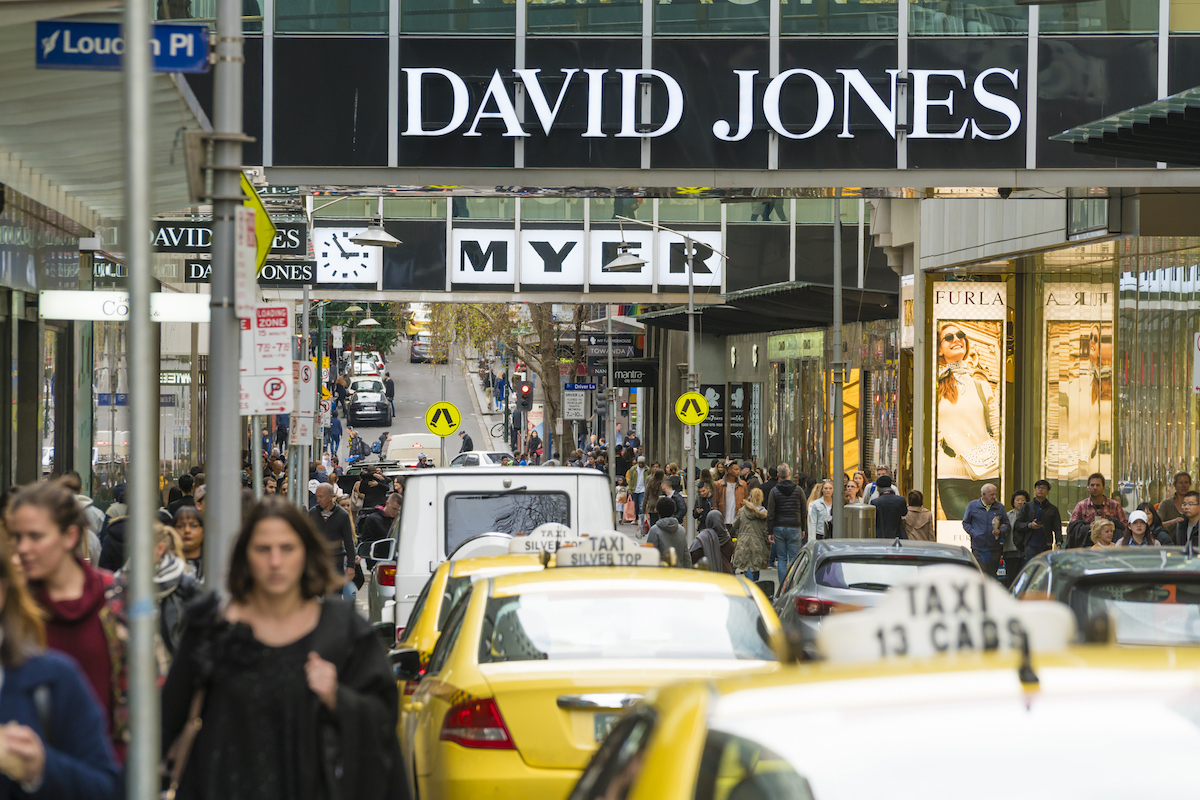Coles and Woolworths. Myer and David Jones. The Big Four banks. Channels 7, 9, 10, the ABC and SBS. Holden and Ford. These oligopolies have been seriously challenged to different degrees over the past decade or so.
When we go supermarket shopping now, we can factor in Aldi and the independent chain of Metcash/IGA stores along with Coles and Woolworths. Very soon, we will be given even more new choices in this space, as Amazon sizes up its options for the Australian market. Look for other big names to come in as well, including Aldi’s German rival Lidl.
Myer and David Jones used to have pride of place as the premier department store destinations for fashion and homewares in Australia. That’s no longer the case as a horde of overseas retailers like Zara, H&M and Uniqlo have flooded into Australia. Consumers have also grown far more comfortable with buying goods like shoes and clothing online.
The Big Four banks – Commonwealth, ANZ, Westpac and NAB – still overwhelmingly dominate banking in Australia, but even their grip has been loosed somewhat as foreign banks and smaller players have come into the market. Again, technology in the form of fintech is also reshaping the way we go about banking and finance in this country.
Pay TV, YouTube and streaming devices like Apple TV and Chromecast have totally changed the way we consume home-based video entertainment like TV shows and movies. This has left the once mighty commercial TV channels reeling as they have tried to come to grips with new viewing habits and the shift to online advertising. The same is true of newspapers.
Holden and Ford were once treated as competing religions in this country. But these days, consumers have an abundance of choice when it comes to car brands, with the once-protected status of Australian-based car makers having been totally removed over the past few decades. With driverless cars and the Uberfication of transport, we’ll see even more options available for how people get around.
Once upon a time, consumers had a fairly limited choice about what products and services were available to them. Technology and globalisation has dramatically changed that. And that change isn’t about to stop. It’s going to keep happening in areas like retail, banking and the media, and in other parts of the economy, too. We haven’t seen the end of the disruptive force of digital transformation.
In fact, what we’ve seen so far is really an entree to the main course. Technologies like blockchain, AI, automation, machine learning and VR will change industries like finance, legal services, infrastructure, logistics and transport, and manufacturing in profound ways.
One of the consequences of digital transformation is that it has accelerated this process of globalised competition. This has happened hand in hand with the opening up of markets around the world as a result of global free-trade deals.
The development of online commerce has made it much easier for businesses to establish a presence in other countries simply by having the right digital plan to underpin expansion. Advances in areas such as cloud computing have made it possible to do business in real time, 24/7, from anywhere in the world.
The cosy market realities that Australian businesses once enjoyed are either no longer in existence or are being disrupted. The competition could be from overseas or online. It could be from an established player or an unknown start-up. It could be from within your industry or from outside.
If you’re not thinking about how you can use the new opportunities of a global market and a digital world, you’re not thinking seriously enough about how you can make your business the best it can be. What are you doing to ensure your business is ready for this perpetual state of disruption?







